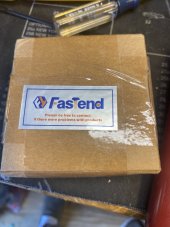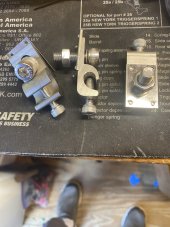I'm willing to bet that most panels are going to have a loss of continuity across the four sides of the frame, simply from the way they are constructed. That is, unless the manufacturer purposely bonded all four sides. I don't recall seeing anything about that in any documentation. Which makes me think there are millions of panels installed this way. I have a couple questions on that -
1. If this is a major issue why has it not been addressed before now?
2. What would be the result of a short circuit in this scenario?
Okay three questions ...
3. Why haven't we been bombarded with cases where there has been some type of negative outcome such equipment damage or someone being electrocuted or at least having the hell shocked out of them?
I'm not arguing that it's not a common thing at all, just wondering if it's a critical thing.
Beats me… i never said it was a issue ,much less a big one…I don’t know…that’s why I asked Tim..
I have read online of some places that require all four side to be bonded to get approval… it’s a big country…lotsa different inspectors…
I have seen it discussed in several places…Thats why when I got mine I noticed the gap between the side corners … so I test all of them…no continuity at all …Zero … nada…
I do not know any solid answers but my learning would suggest to me ,depending on the voltage being run , if that they were not all tied together to trip a breaker or clear a fault and some got shorted and some didn’t there could be a potential difference… is it 21 volts ..it’s it 90 volts or 300 ..?
I don’t know exactly what could the consequence could be..I’m sure one of these other cats will know…but it probably depends on several conditions ..
But I do know this … if your panels are not connected “somehow in some way “ to each other I do not see how that can be called a proper bond…ya got pieces of metal all over the place that could be touched at different potentials..
I say the rails and the weeb comectors probably help the situation…plus most folks don’t go crawling around their panels everyday on the roof…( I think)
my are mounted 3 ft off the ground on a steel trailer… on a wooded platform.all of them and the combiner box and tied together with good continuity and tied to a chassis bus bus bar on the trailer that is has a six gauge wire leading back to a single electrode tied to the multiplus and the rest of the gear…everything is all tied together at one point..
. I touch my panels everyday in different spots when tilting them..if I’m standing in wet grass and touching a grounded chassis to the tailor and an unbonded shorted frame at the same time, 90 volts could run through me ……it may get me..it may not… depends on conditions…
back in the old days we had 2 solar panels on the boat….. nobody ever bonded anything to anything ….we just hooked em up to help charge the batteries at 12 v…..a different world..
I still ask the same question, if you don’t have continuity, how can everything be bonded to the same potential…maybe I got a weird set of renogy panels… I don’t know…
Said in all seriousness… I simply don’t know…that’s why I asked….?




